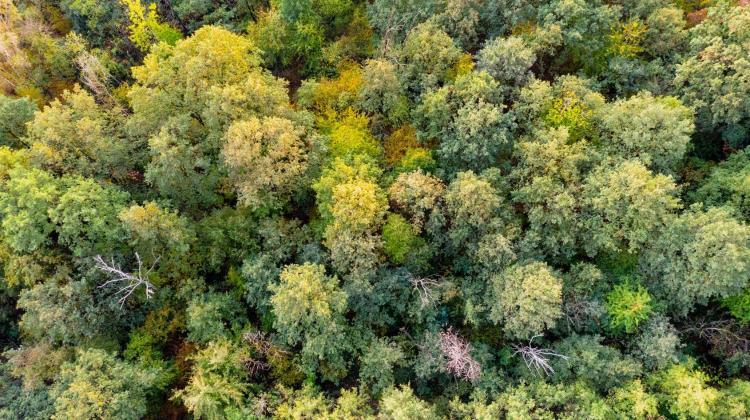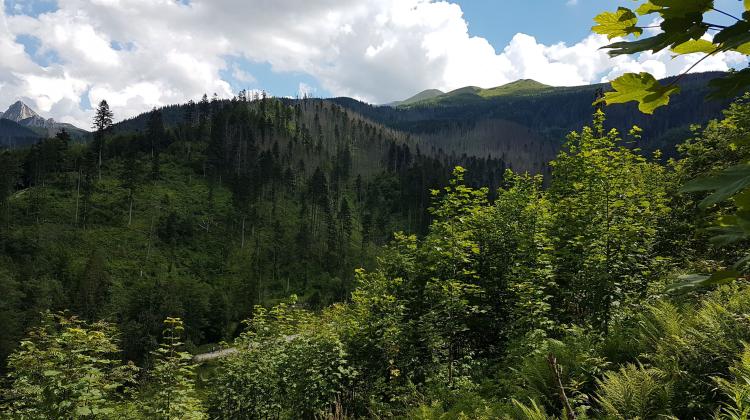Scientists slam EU over forest protection strategy
 Photo: Fotolia
Photo: Fotolia
A team of international scientists have hit out at the EU’s new strategy for protecting forests, saying that if we want to protect European forests from threats including the effects of climate change, we must also support their surroundings and natural regeneration processes.
In May, the European Commission published its EU Biodiversity Strategy for 2030, announcing the reconstruction of Europe's biodiversity taking into account the needs of people, climate and the planet and including the restoration of degraded terrestrial and marine ecosystems.
It also called for the protection of forests remaining in the EU, including the restoration of forest ecosystems' resilience. The strategy requires strict protection of primeval, close to natural and very old forests. Forests of this type, such as the Białowieża Forest, Carpathian Forest or forests in the north-west of Sweden (which were only slightly affected by total logging in Sweden in the 1950s and 1960s), represent only 0.7 percent of Europe's forest area. Only 46 percent of their surface is strictly protected.
Now scientists from Poland, Germany and Sweden have said that although the strategy is a good opportunity to introduce effective forest protection, the forest protection programme has its weaknesses.
Writing in the journal Science, the researchers said that the EU strategy overlooks the need for spatial coherence, arguing that the effectiveness of protecting small, protected patches of the forest will be lower if intensive forest practices dominate in their surroundings.
Co-author Dr. Przemysław Chylarecki from the Museum and Institute of Zoology of the Polish Academy of Sciences in Warsaw, said: “If the protection is focused only on the oldest fragments of forests, such as the Białowieża Forest or the Carpathian forests, it is not enough, because colloquially speaking they are raisins scattered over a larger landscape.
“The protection of these +islands+ alone will not solve the problem. If we want these old forests to cope with climate change, we must also protect their surroundings to maintain consistency and connectivity of these valuable fragments of forests.
“This is one of the reasons why we should prevent building roads through valuable forest fragments. Support should also be provided for the natural renewal and selection of trees that are most resistant to insect attacks and natural disasters."
He also slammed the EU’s strategy, which introduces the requirement to restore forest ecosystems, proposing to plant over 3 billion trees as an example of a specific action, as “spectacular but risky” as the strategy does not specify the species of trees that should be planted.
The authors argue that the species are important especially considering that forest management in most EU countries increasingly negatively affects the functionality of ecosystems by introducing exotic species.
Professor Chylarecki said that although a common view in forest management is that alien species, such as Douglas fir, Sitka spruce or Weymouth pine, will endure future climate changes better, while maintaining good yield (wood pulp production), “no one really knows this, because these species have not yet been studied in such detail.
“These species have been tested in our latitude, but the impact of climate change was not taken into account. Douglas fir was brought to Poland by the Germans well over 100 years ago; it worked well in terms of performance, just like the Japanese larch. But this does not change the fact that they have not been tested in the conditions of climate change.
“In addition, we do not know much about their functioning in the ecosystem. When we introduce new species into an ecosystem, ones originating, like the Douglas firs, from the Rocky Mountains, it's difficult to say what relations they will have with native mushrooms or insects considered pests in forest management. It is a risk.”
“Instead of planting trees, the authors of the paper argue that nature conservation experts should focus on reducing degradation (namely: logging) and supporting natural forest regeneration processes. The EU strategy does not take into account the natural, automatic regeneration of forests. Leaving them alone for natural regeneration usually leads to the development of more trees at a lower cost than by planting. The EU strategy should promote a no-interference approach in order to ensure the natural response of ecosystems to degradation and environmental changes.
Citing the study of mountain forests damaged by bark beetles in North America, Professor Chylarecki said that a forest that regenerates spontaneously after a natural disaster endures subsequent disasters (often fuelled by climate change) much better than a planted forest.
It had been confirmed before that the bark beetle attack causes a dramatic change in the genetic composition of trees. “Only a few trees survive, ones with a specific gene composition. And those are the specimens that should reproduce and prepare next generations for the renewing forest. And not the specimens that we have cultivated, ones that have not passed through the selection sieve and will be attacked by the bark beetle in a few years,” the professor said.
He added: “This is a very strong selection. If we don't allow it to work and let the forests evolve in this arms race between trees and bark beetle, then we'll score an own goal. We are reintroducing genotypes into the forest that have not been subject to this natural selection.
“Actions aimed at promoting the adaptation of forests to global change and increasing their resilience should be based on all available ecological science and require a more complex view than a simplistic planting strategy.”
The scientists add that the EU Biodiversity Strategy for 2030 has been published without implementing documents concerning the EU and member states level. Chylarecki said: “We assume that our comments may be useful in the context of preparing a list of specific actions to accompany the strategy.
“The starting point for all this criticism is the fact that the European Commission has not learned its lesson from the previous Biodiversity Strategy for the years 2010-2020. That strategy was also ambitious in assumptions and goals, but none of them was achieved. The question is: why? Partly because they were unrealistic assumptions - and because they were not specific. Documents that do not take into account the lessons from previous editions can repeat old mistakes. It we want to protect forests in an age of rapid climate change, we can't afford to waste another decade.”
The initiator of the article was Dr. Nuria Selva from the Institute of Nature Conservation of the Polish Academy of Sciences in Kraków, co-authors are Professor Bengt-Gunnar Jonsson from Mittuniversitetet in Sundsvall (Sweden) and the Swedish University of Agricultural Sciences in Umeå, Pierre L. Ibisch, professor of nature conservation at Hochschule fur nachhaltige Entwicklung Eberswalde (Germany), and Dr. Przemysław Chylarecki from the Museum and Institute of Zoology of the Polish Academy of Sciences in Warsaw.
More on forest protection in the video.
PAP - Science in Poland, Anna Ślązak
zan/ ekr/ kap/
tr. RL
Przed dodaniem komentarza prosimy o zapoznanie z Regulaminem forum serwisu Nauka w Polsce.


















